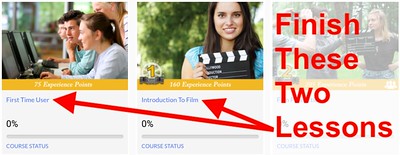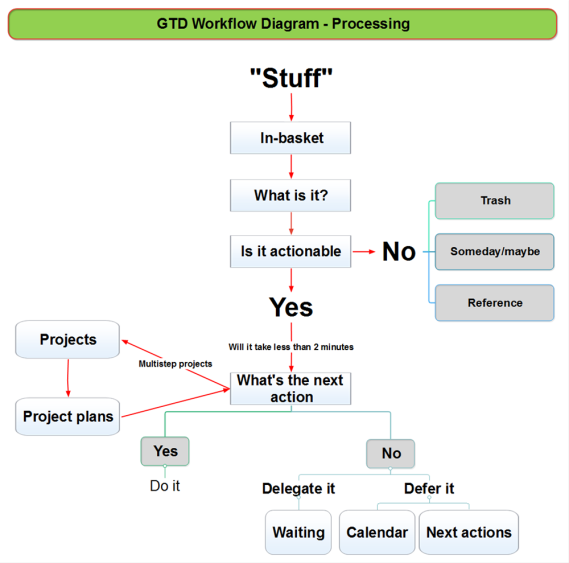Comparative Study Worksheet 2020-21

“Film scripts for sale in Soho! #newyork #newyorkcity #nyc #movies” by Nat Ireland is licensed under CC BY-NC 2.0
Steps and Tasks
- Brainstorm possible films for the task. You must select TWO films from contrasting cultural contexts.
- Brainstorm and justify at least three different areas of FILM FOCUS for your two chosen films.
- Brainstorm and justify at least two different CULTURAL CONTEXTS for your two chosen films.
- Consolidate your ideas and develop at least three different RESEARCH QUESTION topics for your study.
- Finalize your choices and select your RESEARCH QUESTION. Choose two films for comparison.
- Develop the main arguments you will make about your topic.
- Collect evidence from the films that support your argument.
- Research secondary sources for information that supports your argument.
- Write your Narration and plan the audio-visual components of your video essay.
- Record, assemble, and edit your Comparative Study Video Essay.
- Create a Works Cited document (separately) once your Comparative Study is finished.
Guidance for Your Work
“Simple formative analysis of film elements, no matter how precise or insightful, won’t cut it which is why the research question needs to be crafted in such a way that it provides scope for theoretical and socio-historic exploration. It’s basically an EE in disguise but focusing on two very different textual sources.”
- Thoroughly read the Comparative Study requirements in IB Film Guide PDF (including rubrics)
- Watch Mr. Le Duc’s CS Overview Video
- Examine the CS Poster 1 (PDF)
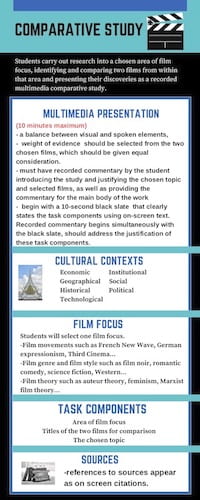
- Examine the CS Poster 2 (PDF)

- Watch Garrett’s CS Example and Read Garrett’s Two Column Script
- Notice the color designating justified film language elements
- Watch another example about South Korean New Wave
- Explore Mr. Le Duc’s Film Resources Page for Video Essays
Comparative Study Task Components
For this assessment task, each student identifies, selects, and researches each of the following task components.
- TASK 1: One area of film focus.
- TASK 2: Two films for comparison from within the chosen area of film focus, one of which originates from a contrasting time (historical) or space (geographical) to the personal context of the student, and the other film identified for comparison must arise from a contrasting cultural context to the first film. Students are required to select films they have not previously studied in depth. The selected films cannot come from the prescribed list of film texts provided for the textual analysis assessment task and, once selected, the films cannot be used by the student in any other assessment task for the DP film course or the extended essay.
- TASK 3: A clearly defined topic for a recorded multimedia comparative study, which links both the selected films and the identified area of film focus. Each student should invest time in researching, developing, and honing their topic (which in most cases is likely to be expressed in the form of a research question) to ensure it is clear, focused and concise, in order to provide them with the maximum potential for success in this task. The topic should seek to enrich the student’s understanding of the chosen area of film focus and should avoid a plot-driven approach to the comparison.
The assessment criteria for this task requires students to provide a strong justification for the choice of task components as part of the recorded multimedia comparative study. This includes the student’s justification for how films arise from contrasting cultural contexts.
1. FILM Choices List
How much time did you spend: 10 minutes
| Which films are you considering for your final Comparative Study? List as many as you wish below as part of an initial brainstorm. Remember that you must select TWO films from contrasting cultural contexts for this task.e.g. CITIZEN KANE | Year, Country, and Director of the film.e.g. 1941, USA, Dir: Orson Welles |
| Little Women | 2019, USA, Greta Gerwig |
| Romeo + Juliet | 1996, USA, Baz Luhrmann |
| Titanic | 1997, USA, James Cameron |
2. Areas of FILM FOCUS
- Set a timer
- How much time did you spend: 15 Minutes
- Research Film Movements
- Research Film Genres
- Research Film Style (the difference between genre and film style defined)
- Research Film Theory
- See the Examples of Possible Task Components section further down this document
| Film Focus Possibility – identify the broad focus area and then add specifics (e.g. “THEORY – Auteur theory” or “GENRE – Horror”). Develop at least THREE options…you can create more by adding more rows. | Justification for this Film Focus. Be as specific as possible. |
| Genre – Romance Films | (Little Women, Titanic, Divergent) The films are based around the genre of romance, but both films contrast in story endings. With this film focus, the similarities between the films can be highlights, as well as the differences.
– Little Women: conflicting relationship, other choices above romance – Titanic: making sacrifices for romance – Romeo + Juliet: family or love |
| Theory – Feminism | (Little Women, Titanic) The idea of feminism is brought up within both films. To highlight the use of feminism in a different plot and setting.
– Little Women: Jo and Teddy (deciding between her ideals or a relationship) – Titanic: Rose standing up for herself |
| Theory – Marxism | (Little Women, Titanic) Little Women brings up the subject of poverty through the experiences of the sisters, whereas Titanic, mentions wealth through the two main characters and the actions they take about wealth. |
3. Chosen CULTURAL CONTEXT
How much time did you spend: 10 minutes
- Economic, Geographical, Historical, Institutional, Political, Social, Technological
| Identify at least TWO Cultural Context possibilities for your chosen films. |
Justification for this Cultural Context. Be as specific as possible. |
| Economic | Little Women discusses the wants of being wealthy through the sisters and their experiences. Titanic mentions wealth through the two contrasting characters. Having to decide between love or marrying wealthy.
– Jack is poor, Rose is wealthy – Little Women: marry for money or marry for love, (for Jo: marry at all) |
| Historical | (Little Women, Titanic) Both films are presented during a different time period, compared to the twentieth century.
– Little Women: middle of the civil war, feminism, – Titanic: 1900’s, wealth (marrying rich) |
4. RESEARCH QUESTION Possibilities
- Set a timer
- How much time did you spend: 8 minutes
Consolidate your thoughts above and develop at least THREE different research question possibilities. More are possible by adding additional rows to the table below. FYI these will be shared with the full class for discussion of strengths and weaknesses.
| Your Chosen Area of Film Focus | Topic for Comparative Study (written as a research question) |
| Romance Films (genre) | To what extent is romance the main focus to drive characters within romance films? |
| Feminism (theory) | To what extent is feminism the inspiration for the perspectives of the characters? |
| Marxism (theory) | To what extent does wealth drive the plot of the films? |
5. Final Decisions
How much time did you spend: 4 Minutes
Using your topic options in the table above, select ONE to be your final topic for this Comparative Study task. NOTE: There are examples from the IB of what this should look like below this table.
| Your Chosen Area of Film Focus | Film 1 | Film 2 | Contrasting Cultural Context | Topic for Comparative Study practice task (written as a research question) |
| Romance Films (genre) | Little Women (2019) | Titanic (1997) | Social structure | To what extent is romance the main focus to drive characters within romance films? |
6. Developing Your Topic
- Set a timer
- How much time did you spend: 22 minutes
| Develop 3-5 main arguments that can be made about your topic based on your research question and chosen film focus. | Brainstorm how you could support these arguments within your video essay. |
| Bringing “honor” to the family | – (Titanic) Rose having to marry to keep her family’s wealth
– (Little Women) Marry the richest man, have kids, don’t work |
| Standards for women | – To get married
– Stay home, cook and clean – Not education needed |
| Standards on men —> women disagreeing | – Men would go to war while the women stayed home with the children
– Men were expected to be wealthy |
7. Selecting Supporting Evidence (Primary)
How much time did you spend: 45 minutes
| Identify at least 15 scenes from your chosen films that will help support the arguments you have outlined above. Screen clip a frame from each scene below. | Write notes about how this scene helps support your argument. (These notes will help form your voice-over narration.) |
|
(Starting at 3:03) |
– “…If the main character’s a girl, make sure she’s married by the end or dead” (Demonstrates how women were expected to marry in the beginning, conflicts with Jo and her wants)
– “…until she marries someone unseemly wealthy, its up to me to keep the family up float” (Adds to Jo’s distaste of marriage, want for independence) |
| – Compare to Meg in Little Women at the dance with Jack at the dinner (attempting to fit in as wealthy; demonstrates that romance isn’t the only drive for characters) | |
|
(Starting 1:09) |
– Jo wanting to fight with the Union Army, explaining dislike of being a girl (demonstrates a new focus rather than love or marriage) |
|
(1:30-2:01) |
– Rose and her mother are left with nothing after her father’s death, the reason they are on the boat is to have Rose be married off -> Rose doesn’t care for that, she likes Jack
– Compare with Amy who is meant to marry rich like her Aunt is telling her to |
| – Rose states that the ship was bringing to America “in chains” (compare this with Jo and how she discusses the idea of marriage)
– Niether Rose or Jo wanted to marry if it was not for love |
|
| – In the beginning, for Jack, life was about living it to the fullest, not about love | |
| – Compare with when Jo first meets Laurie, the moment where ideals of life for Jack and Laurie shift (or when Amy first meets Teddy) | |
| – Ideals shift | |
| – Laurie is still heartbroken over Jo, demonstrating how even though he was wealthy, it still didn’t matter | |
| – Jo not wanting to fit with the social norms of society, having to be married off
– For this character, love was not important |
|
| – “girls want to see women be married”
– (transition from beginning to end) Jo ends with her passion… |
|
|
|
– Even with the wants for her career and her family, Jo ignores her stuborness and focuses on love |
| – Amy is told that she must marry wealthy to support the rest of her family (economics)
– (Compare with titanic) |
|
| – The aunt places being engaged above Amy’s wants and career | |
| – Love is the end result
– Compare with Jo and Amy |
*Add more rows as needed.
8. Selecting Supporting Evidence (Secondary)
- Set a timer
- How much time did you spend: 42 minutes
| Identify at least 3-5 secondary sources (articles, books, websites, video essays, etc.) which provide information that help support your arguments being made. In this column include the specific source citations. | Summarize the detailed information from the secondary source that you can use in this column. (You can copy+paste if they are from online sources.) |
| Movie Review: Titanic | – “The other message seems to be about love and happiness, which is clear when Rose, a “rich lady,” fell in love with Jack, a “poor young man.” She was more cheerful in a party with third class people than an aristocratic one”
– ” There is no distinction between rich and poor people” |
| – ” If we use the conflict perspective to analyze the movie, it is easy to see that Rose and Jack come from different classes, which prevents them from being together; even even though they wish to leave their social difference behind, the low status of Jack prevents him from escaping, and he, along with many other lower-class passengers, dies in cold waters of the ocean. On the other hand, according to the interactionist perspective, both main characters do not keep to their social roles; however, they are still interacted with by the others as the carriers of those roles, and this fact eventually seals their fate” | |
| Little Women brings modern feminism to a familiar story | – “Meg struggles with the sacrifices that come with raising a family; Beth’s kindness is unwavering in the face of personal struggle; Amy’s ambition to leave her mark is a force to be reckoned with; Jo fights for her voice to be heard as a writer in a discipline dominated by men” (demonstrates the focuses that each character had) |
*Add more rows as needed.
9. Writing Your Narration
- Set a timer
- How much time did you spend: 3 hours and 15 minutes
Using the information, scene choices, and external sources you have compiled in steps 6-8, you will now write your voiceover narration and match it up to your chosen visual examples.
Length (</= 10 Minutes)
- For the final Comparative Study, your narration should be no longer than 10 minutes in length.
Remember that you need to:
- COMPARE and CONTRAST your two chosen film using the arguments and evidence you identified in parts 6-8, above
- Begin your narration with a detailed justification for the chosen cultural contrast
- Use an equal balance of the two selected films.
- Write in a third-person voice to construct your argument (similar in tone to your Extended Essay and other
comparative analytical work you have written in Film class). - Identify where any WRITTEN TEXT will appear on the screen and highlight this (to reference during the
creation/editing stage)
| Which Visual Evidence/Scenes line up to this part of the narration? | Voiceover Narration Ideas |
Formatting Guidelines
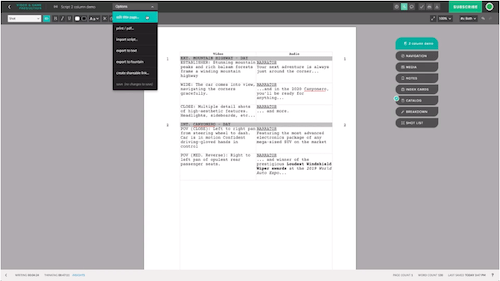
- Watch the Formatting of an Audio/Video Script in Celtx
- Assemble in Two-Column AV Format in an option below
10. Assembling the Comparative Study
- Set a timer
- How much time did you spend: ?
Now you will collect all media resources needed for the task and construct your video essay.
REQUIRED STEPS
- Import the digital copy of your chosen films into editing software
- Identify and extract chosen scenes and clips
- Place and edit clips into a rough timeline for your video essay
- Record audio narration (both partners should participate in narrating this practice task)
into an audio file using recording equipment (Zoom recorders, iPhone, DSLR Rode video
mic, etc.) - Import your recorded narration audio file into your project timeline
- Assemble, edit and fine-tune clips and narration until your video essay takes shape
- Create and add any required textual information in the timeline (including black slate at the start)
- Audio mixing of narration and movie clips (adjust levels so that narration and movie sounds complement each other)
- Export the final video essay movie file
- Upload Unlisted draft to YouTube for peer review
11. Create Works Cited
- Set a timer
- How much time did you spend: ?
- Create Works Cited list separately (Google Doc)
Examples of Possible Task Components
| Area of film focus | Film 1 | Film 2 | A possible topic for comparative study |
| Film movement: German Expressionism | The Cabinet of Dr. Caligari (1920) | Edward Scissorhands (1990) | How and with what effect are specific film elements of German expressionism used within a chosen contemporary film? |
| Film movement: French New Wave | Breathless (1960) | Badlands (1973) | The influence of the French New Wave on New Hollywood’s use of innovative film elements in its representation of youth and violence. |
| Film genre and film style: Black comedy | No. 3 (1997) | The Big Lebowski (1998) | To what extent do “black comedy” films differ according to cultural context? |
| Film theory: Soviet Montage | Battleship Potemkin (1925) | Koyaanisqatsi (1982) | To what extent are specific features of Soviet montage theory faithfully employed in a contemporary experimental film? |
External Assessment Criteria SL and HL
Peer Review Checklist


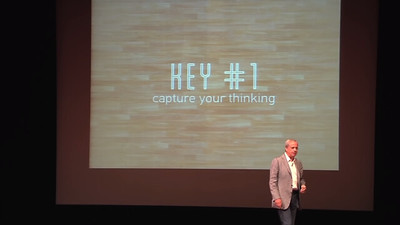
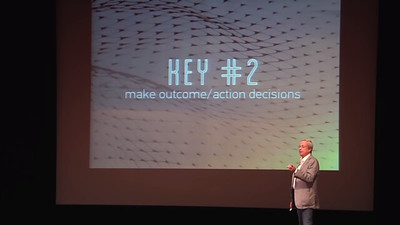

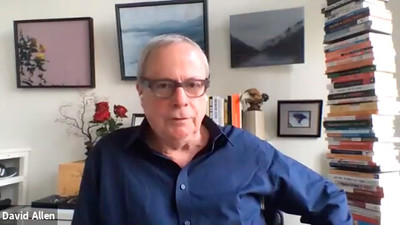
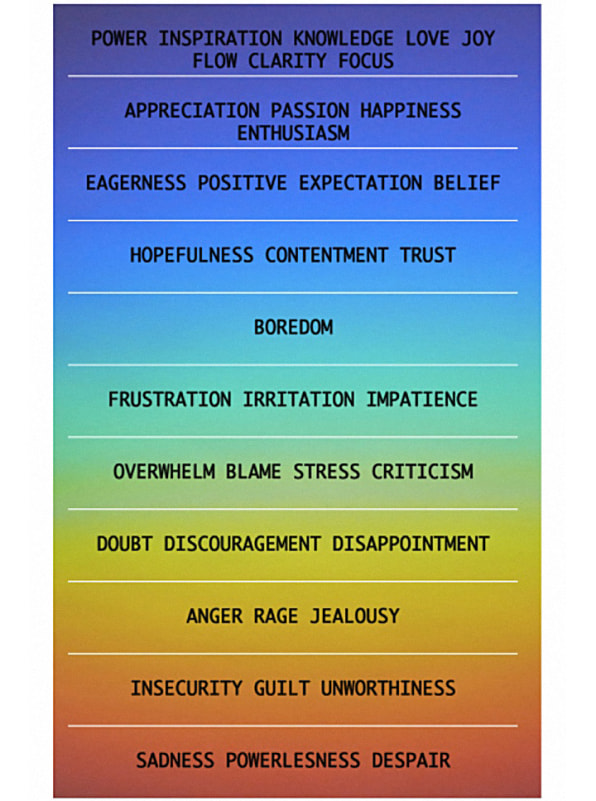 Image from FastCompany Magazine,
Image from FastCompany Magazine, 

